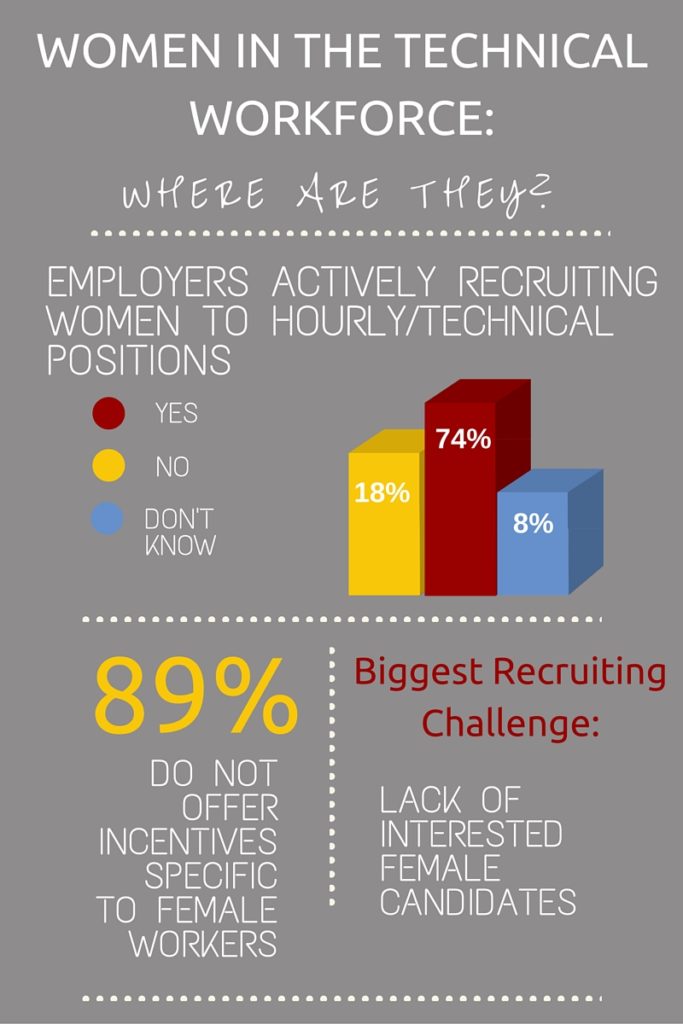It’s no secret that there are fewer women in the U.S. workforce than men. While the ratio of women to men in the workforce has considerably improved over the last few decades, there is still a clear disparity in the types of positions held, benefits offered and more. According to a 2014 report by the Equal Employment Opportunity Commission (EEOC), the majority of women held professional, sales and clerical positions, with numbers drastically decreasing on the opposite ends of the spectrum – from executive and senior level management roles down to craft, operative and labor positions[1]. One DirectEmployers Member noticed a lack of women being recruited and hired for their hourly and technical/manufacturing positions and turned to us to conduct a survey to gain insight from fellow Members.

On the other hand, nearly 90% of respondents indicated that they do not offer any incentives or programs specific to female workers. Those who do offer programs indicated that these incentives were in the form of paid maternity/adoption leave, schedule flexibility, women’s leadership training and more. So where are these employers finding their female candidates? Some of the most commonly mentioned sources include employee referrals, colleges and vocational schools, LinkedIn ads, and military transition programs.
While this survey was specific to hourly and technical/manufacturing roles, the results can easily be applied to other industries, especially within the STEM fields. Unfortunately, a lack of interest among females in male-dominated fields continues to be a problem for many employers as they work to develop a diverse culture. A number of programs, including DirectEmployers Foundation, are working to combat this issue by introducing STEM careers into the early education system and encouraging minorities and women to pursue professions in these fields. We remain optimistic that these statistics will shift as a result of such programs and the increased interest that they generate.
Want to see the full survey report? DirectEmployers Members can access it here in the Member-only community, Pipeline.
1Equal Employment Opportunity Commission. 2014 Job Patterns For Minorities And Women In Private Industry (EEO-1); Web. 29 Mar. 2016. <http://www1.eeoc.gov/eeoc/statistics/employment/jobpat-eeo1/2014/index.cfm#select_label>
